Ilustrations from an article by Vaklamov and Orlov appeared on M-Hobby
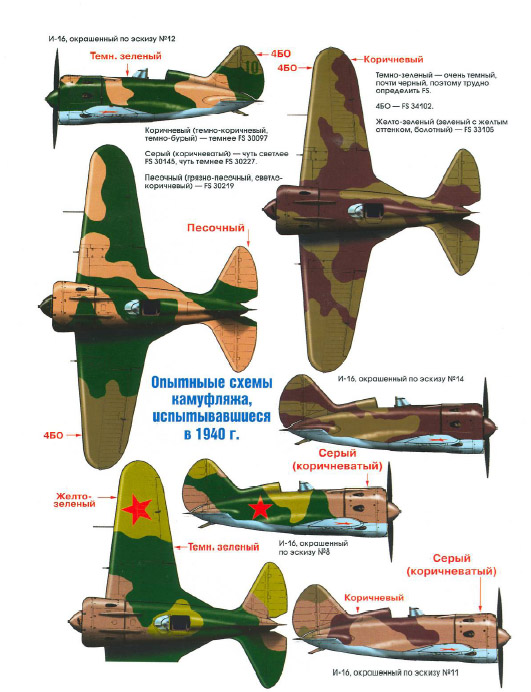
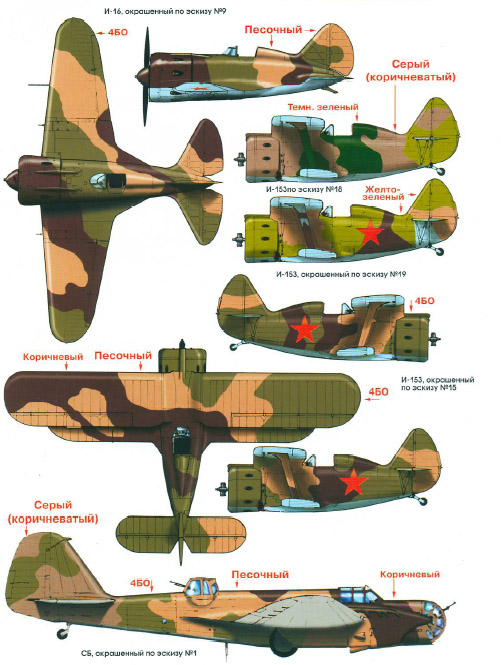
|
by Massimo Tessitori |
|
|
|
All illustrations are from an article by Vakhlamov and Orlov on M-Hobby. The
text is resumedboth from Colors of the falcons
by Jiri Hornat and Colour and Markings of Soviet VVS Aircraft, 1941-1945
by M.V. Orlov and V.S. Vakhlamov .
Experimental camouflages of Soviet planes, 1940
The new green/light blue scheme introduced in May 1940 was criticized by some
officers of the VVS, because the use of only one color for the uppersurfaces,
gloss furthermore, and suggested a disruptive camouflage with matt colors.
These objections led to the costitution of a special committee to test new disruptive
camouflages. Six SB, three I-153s and seven I-16s were given to NII VVS, the
Scientific Institute of the Air Force, to test camouflages up to 5 colors. The
base color was semimatt yellowish green 4BO (an army color, similar to A-19f
but matt) supplemented by many water-soluble matt colors. At the same time, various
colors were tested for the undersurfaces, the best of which turned to be light
grey.
A Bf-109E purchased by Germans, with a dark green/black green camo, was included
into the tests as a comparison, as some planes with standard green painting.
Trials were concluded on August 28, 1940, when results were confirmed by six
crews of the 134 BAP, that flew over the camouflaged planes and were unable to
detect many of them. In consequence of this success, some multichromatic schemes
were suggested for adoption, and led to temporary instructions in late 1940.
Unfortunately it turned out that raw materials for the production of those paints
were insufficient for all the planes; besides, the water-soluble colors were
scarcely durable and increased the aerodynamic drag. So it would have been necessary
to develop new durable paints, even if glossy waiting to develop new matt paint.
Repainting of the whole Air Force fleet in 1941would have required 124 tons of
glyptal or oil enamel and 266 tons of nitrocellulose dope. Despite all the work
carried out in 1940, none of the multicoloured patterns were used in mass production.
Ilustrations from an article by Vaklamov and Orlov appeared on M-Hobby


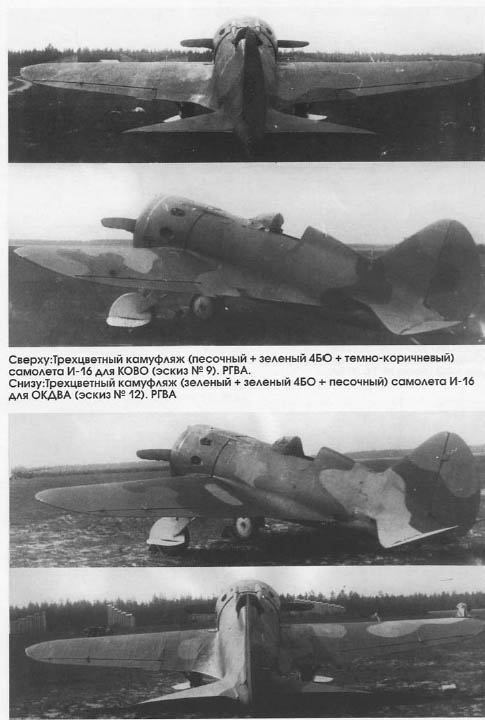
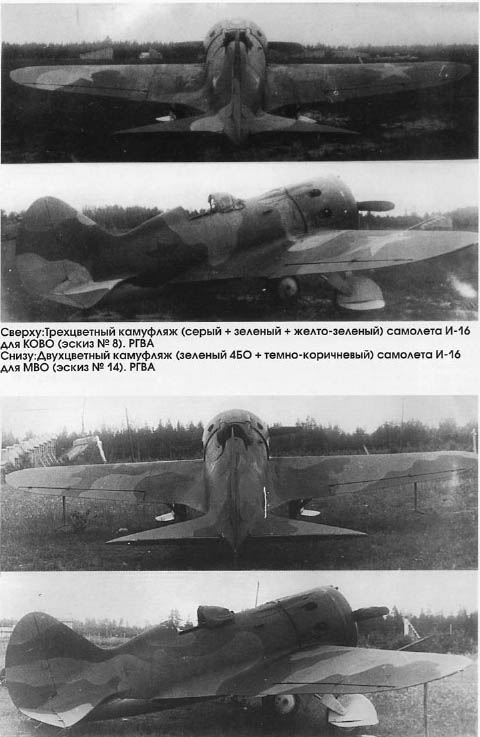
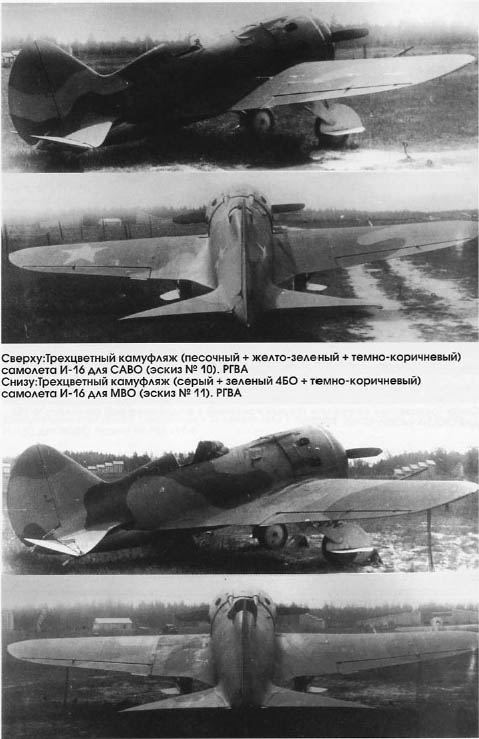
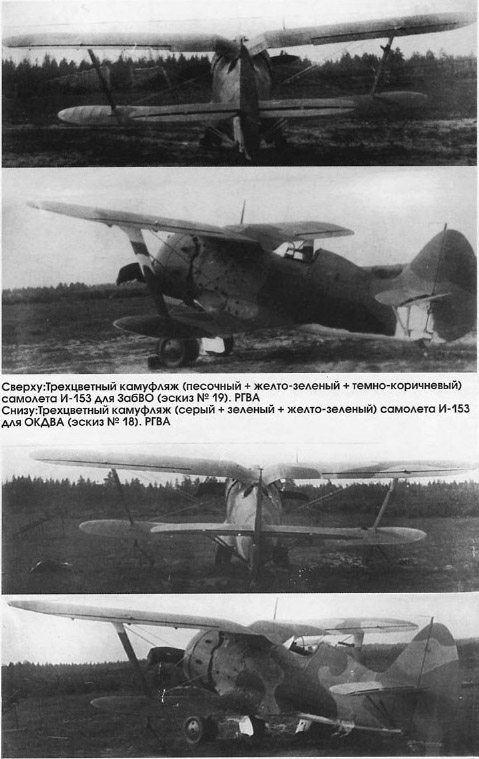
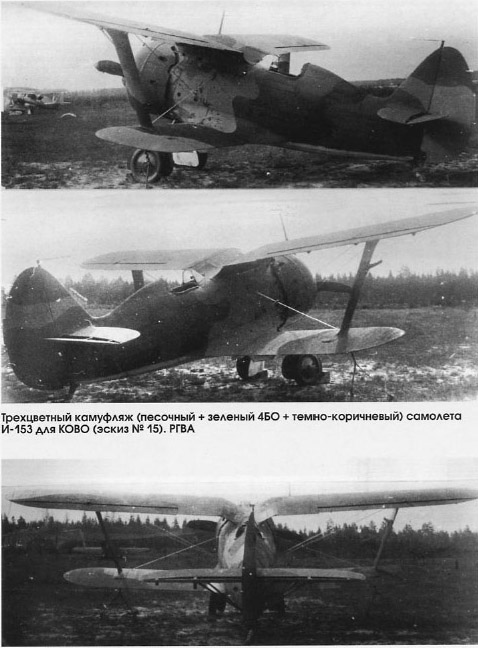
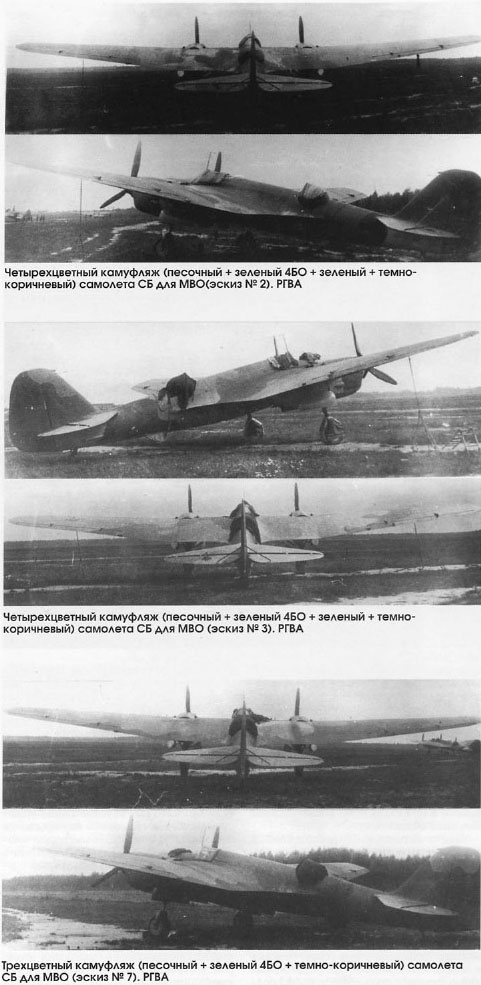
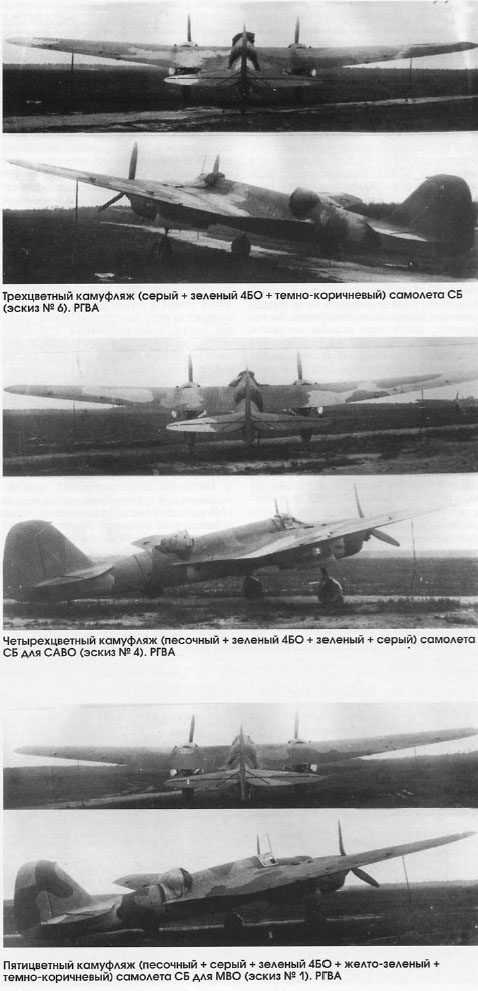
| name of paint | indicative chip | match | typical use | notes |
| 2Le
matt yellow green |
 |
AKAN 381 | army color; utilized on planes only for experimental camouflage in 1940 | oil enamel |
| 3ie
matt sand |
 |
AKAN 382 | army color; utilized on planes only for experimental camouflage in 1940 | oil enamel |
| 3ng
matt brown |
 |
AKAN 383 | army color; utilized on planes only for experimental camouflage in 1940 | oil enamel |
| 22lg
matt light green |
 |
AKAN 322 | army color; utilized on planes only for experimental camouflage in 1940 | oil enamel |
| 4B0 matt camouflage green |
 |
AKAN 320 | army color; utilized on planes only for experimental camouflage in 1940 | oil enamel |
| AE-9 gloss light grey |
 |
FS-15630
(4, 6) |
Overall scheme of most SB;
I-15bis, I-153, I-16, R-10 and other types metallic parts (eventually, of the
undersurfaces of types that had green uppersurfaces) |
Oil enamel
Specification issued around 1937
1937-1940 exterior paint for metal
from 1941 interior paint |
| AII Sv.gol. (svetlo goluboi) gloss light blue |
 |
AKAN 342 |
Undersurfaces of I-16s and I-153s
|
Nitrocellulose lacquer
standard after june 1940
|
On May 6, 1941, a new directive ordered factories to deliver planes with disruptive camouflage on uppersurfaces and light grey undersurfaces. Disruptive camouflage was intended not only to match the plane to the prevailing colors of the background, but also to distort its shape and make its detection more difficult. The scheme was not specified, and this directive was not immediately applied.
http://sovietwarplanes.com/board/index.php?topic=1809.0
Camouflaged LaGG-3s of Gorki, June 1941
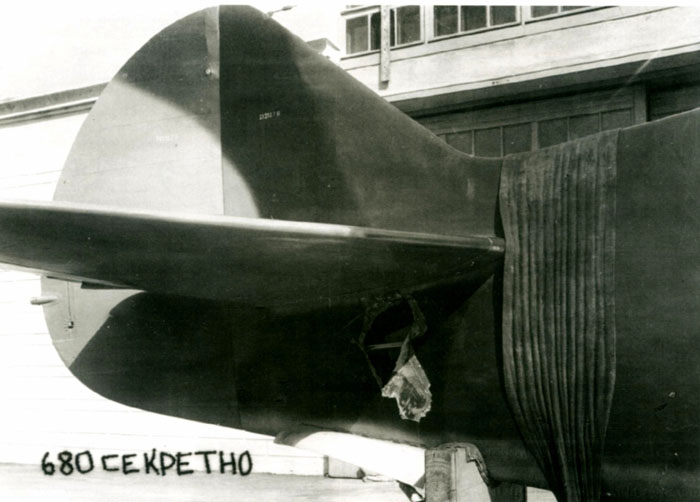 |
In early June 1941, 28 LaGG-3s were painted in multicromatic camouflages in
factory n.21, in Gorki. |
Camouflaged Pe-2, June 1941
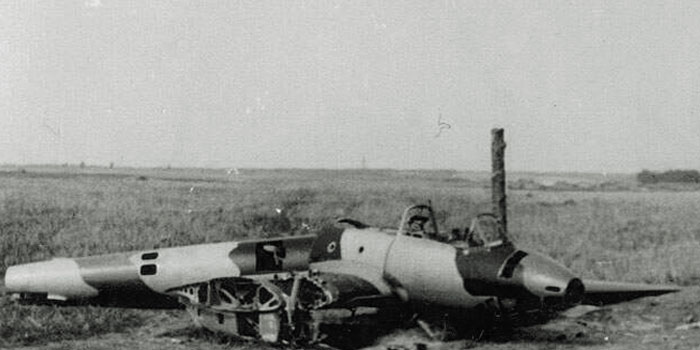 |
There are many photos of an unit of Pe-2 destroyed on the ground in June/July 1941 (one of the photos taken by German soldiers was dated 21-7-41). All these planes show a complex camouflage involving four or five shades on the uppersurfaces. The shades are not clearly identified: they seem to be two light ones, two dark ones plus black. It is possible that they were the same experien ced on LaGG-3s. The camouflages were probably made just before the war outbreak; some of the planes were updated with red stars on the tail. To know more, go to the Pe-2 page |
Camouflaged MiG-3, June 1941
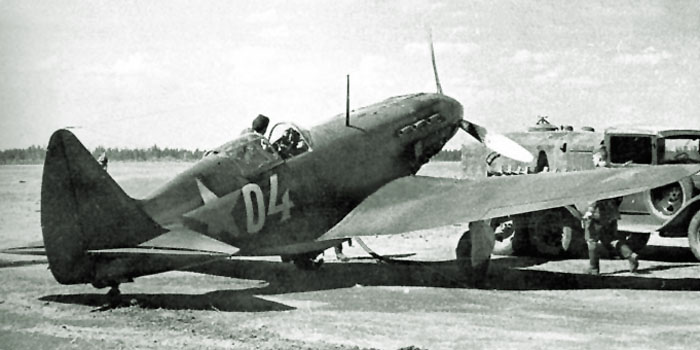 |
Early MiG-3 of 7 IAP, piloted by Capt. S.N. Polyakov, Leningrad front, summer 1941; according to some sources, the photo was taken some day before the war outbreak. Noticeable is the non-standard camouflage, apparently composed by four colors, and the red stars over the wings as prewar use; the fuselage star is unusually large if compared to those applied in factory before the war. The colors can be only guessed, but it's likely that were more or less those experienced on LaGG-3s. (Image from Red Stars of Geust, Keskinen, Steinman) |
Camouflaged I-16, August 1941
 |
I-16 white 71 of V.Romanenko, 13 IAP VVS KBF around August 1941. The fantasious camouflage doesn't match the pattern suggested by the early 1941 directive, but it seems to feature 5 different shades so it could be easily inspired to it. It's not clear if it was made before the war outbreak, or later. seems that there is not any red star on the fuselage, so we have to suppose that there was one on the tail. |